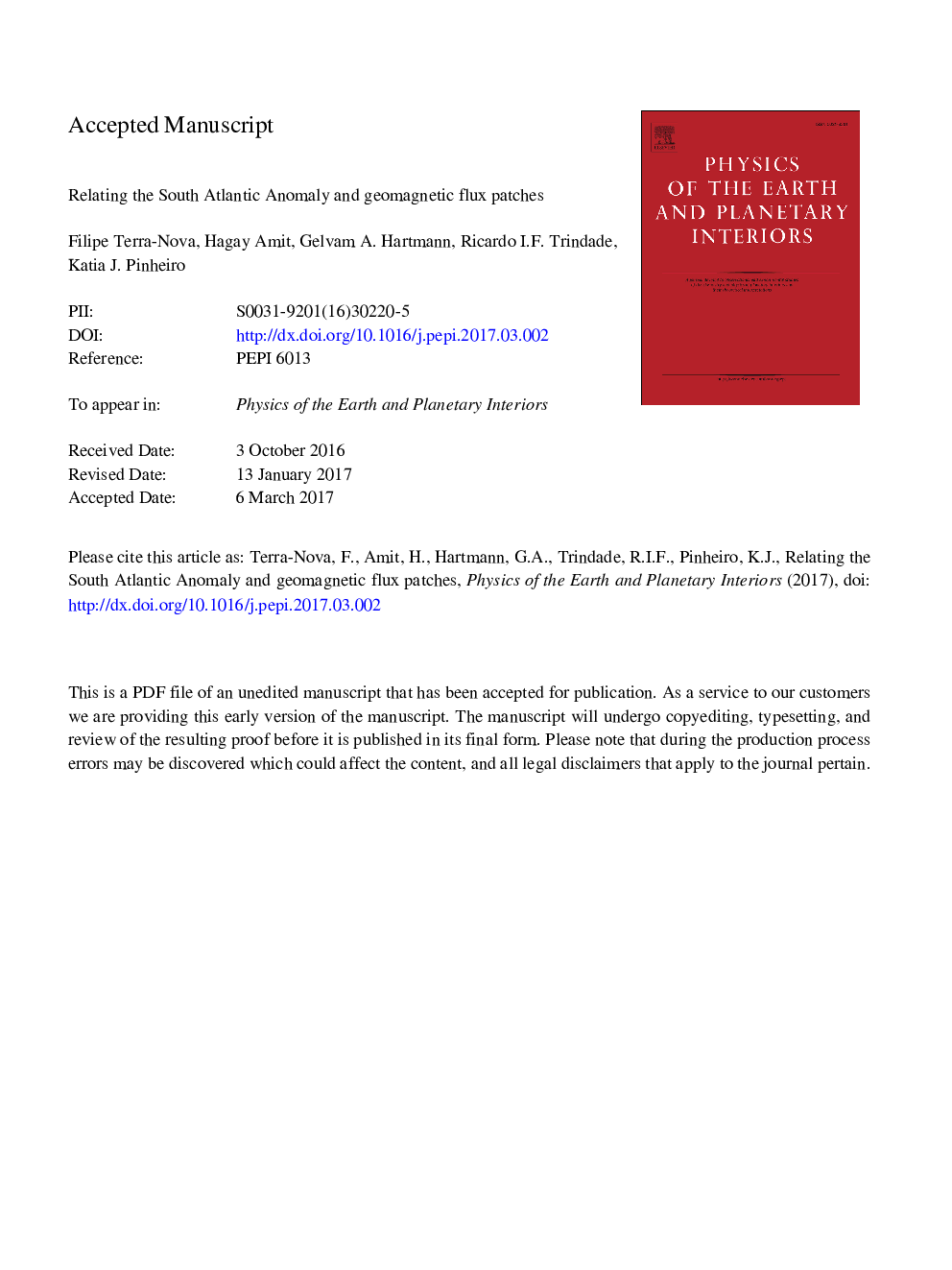| Article ID | Journal | Published Year | Pages | File Type |
|---|---|---|---|---|
| 5787324 | Physics of the Earth and Planetary Interiors | 2017 | 52 Pages |
Abstract
The South Atlantic Anomaly (SAA) is a region of weak geomagnetic field intensity at the Earth's surface, which is commonly attributed to reversed flux patches (RFPs) on the core-mantle boundary (CMB). While the SAA is clearly affected by the reversed flux region below the South Atlantic, we show that the relation between the intensity minimum at Earth's surface and RFPs is not straightforward. We map a field-dependent intensity kernel (Constable, 2007a) to study the relation between the radial geomagnetic field at the CMB and the field intensity at Earth's surface. Synthetic tests highlight the role of specific patches (reversed and normal) in determining the location of the surface intensity minimum and demonstrate that the SAA can indeed be explained by a few intense patches. We show that the level of axial dipolarity of the field determines the stability of the relation between the SAA minimum and RFPs. The present position of the SAA minimum is determined by the interplay among several robust geomagnetic flux patches at the CMB. The longitude of the SAA minimum appears near the longitude of the Patagonia RFP due to the low-latitude normal flux patches (NFPs) near Africa and mid-Atlantic which diminish the effect of the Africa RFPs. The latitude of the SAA minimum is lower than the Patagonia RFP latitude due to the South Pacific high-latitude NFP and the axial dipole effect. The motion of the SAA minimum is explained by the motions and changes in intensity of these robust geomagnetic flux patches. Simple secular variation (SV) scenarios suggest that while the SAA path can be explained by advection, its intensity decrease requires magnetic diffusion. In addition these SV scenarios provide some speculative predictions for the SAA.
Related Topics
Physical Sciences and Engineering
Earth and Planetary Sciences
Geophysics
Authors
Filipe Terra-Nova, Hagay Amit, Gelvam A. Hartmann, Ricardo I.F. Trindade, Katia J. Pinheiro,
